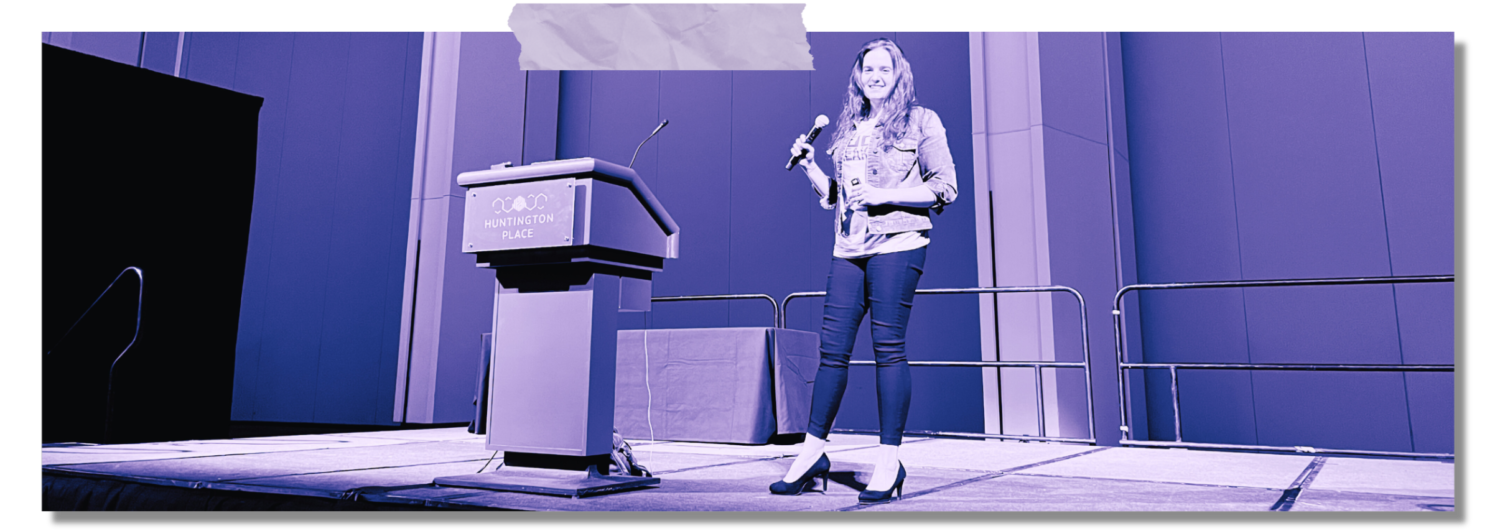As I do every day, I took my first-grade students outside for our daily outdoor play break. As they do every day, they wait for me to open the door and they run and scream like it’s the first breath of air they’ve gotten in their entire lives.
Like every day, they scatter in one hundred different directions and I take my first of many headcounts. Today was different. Today they all came to a dead stop on the playground and I watched the crowd assemble quickly and assess the situation. What the situation was, I had no idea yet. But I was about to find out.
“MRS. MCMENEMY! MRS. MCMENEMY! WE FOUND A FROG!”
A frog? A frog. What on earth was I going to do with a frog? This was a teachable moment. That much I knew. The problem however lied in the fact that I had no idea where it came from, what to do with it, and there was no way I was going to touch our slimy new friend, affectionately named Mr. Hopper. Or so I thought anyway.
And so began Operation: Frog Rescue.
Let’s take a step back for a second. Let me give you a little bit of background into the inner workings of my teaching style and an insight into my classroom, or what I generally refer to as organized chaos. In my four walls for 15 years, it’s always looked a little chaotic from the outside peeking in. But I don’t see chaos. I see little minds going a mile a minute, with ideas to share, problems to solve, risks to take, things to learn. That looks messy, it sounds loud.
As my friend Chris Woods (@dailySTEM) says, “A noisy classroom is a collaborative classroom. A messy classroom is an inventing classroom.” We are definitely noisy. We are definitely messy. And trust me, we are definitely learning.
I’ve always believed that our students should be given opportunities to lead their own learning, to ask questions and have the tools and materials necessary to explore the answers, to learn in an environment where I don’t know is not failure, but a chance instead to find out.
Why? Because that’s how my brain works.
I created a culture of STEM learning in my classroom before I knew the incredible value of creating a culture of STEM learning. Chris says, “STEM is not a class you teach. It is a culture you create.” And so that’s what my classroom has always looked like.
When we want to know how something works, we take it apart.
When we want the answer to, What happens when…? we test it out.
When we need to find out How do we…? we figure it out together.
How? By exploring the world around us every chance we get to bring learning to life.
That is STEM. STEM is engaging. STEM is hands on. STEM is real life.
Our youngest learners are naturally inquisitive. They are naturally curious. Making attempts at making their world make sense is what they do. So, when Mr. Hopper was found on the playground that day, we had no other choice but to figure out a way to help. We knew if we were going to return this frog to the pond across the street, we were going to have to figure out a way to get him there.
Back to Operation: Frog Rescue.
It was decided he’d need a temporary home. They had questions…but what will he eat? How will he be comfortable? What will we put him in? After a quick Google search, they had all the information they needed.
They lead the charge; I held the frog. Ew.
I watched little groups of 5- and 6-year olds take off in different directions to gather everything they needed to make this rescue mission a success. Some grabbed leaves, others sticks, some worms, others dirt. I watched two go off to figure out a way to scoop puddle water into our plastic lunch container (aka, Mr. Hopper’s temporary bachelor pad) using nothing but their hands and a lid. It took quite a few attempts, but they refused to give up. In the course of 15 minutes, they’d built a complete habitat to keep our new hoppy friend safe until we could return him to the pond next to the school. Operation: Frog Rescue was a complete success.
In the days that followed, students began using materials from our maker space to create their own frog transporters in the event we found another one.
I watched as they put their creations through tests to see if they could withhold the weight of a frog.
They made changes when they discovered issues with size and durability.
They explored others’ creations and asked questions, which then lead to improvements on their own.
All of this incredible learning and exploration steered by their own curiosity and a few guiding questions as I watched their brains go.
They used Science, Technology, Engineering and Math to bring their learning to life — because they had the opportunity to do so. They used critical thinking skills, they collaborated and problem solved. This wasn’t a planned experience. It just happened, organically. What I realized as a result was how it could have easily not happened.
Our students need to be given opportunities to lead their own learning, to explore their own curiosities, to discover answers to their own questions. As educators, we need to feed those natural curiosities and cheer innovation. Allow them to explore their world. That is STEM learning.
It’s our job to let them lead, while we hold the frog.
